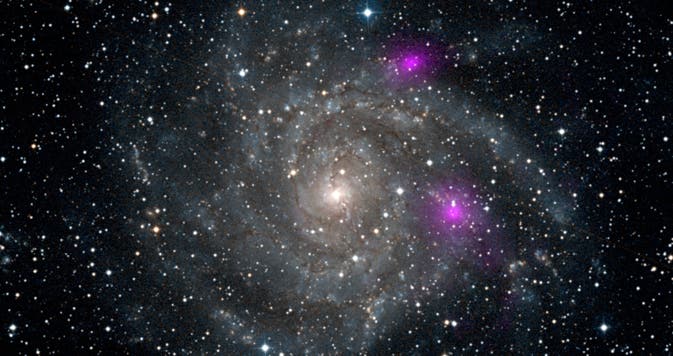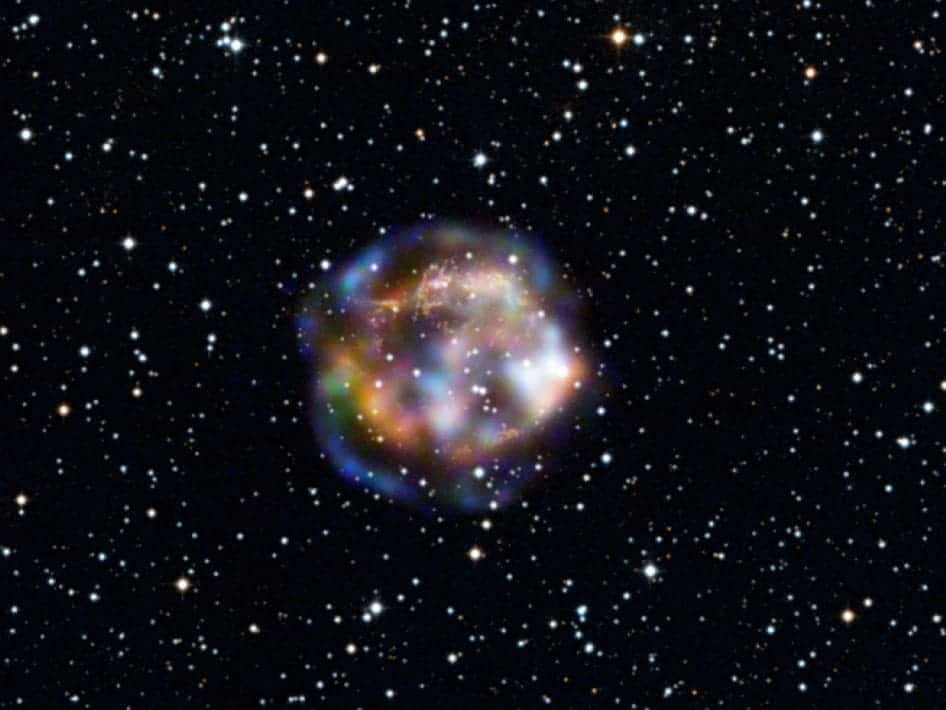
The new view of spiral galaxy IC 342, also known as Caldwell 5. (c) NASA
Launched just last year, NASA’s Nuclear Spectroscopic Telescope Array (NuSTAR) is almost fully tweaked and ready to supply mankind with valuable scientific insight. Recently, NASA showcased a few finds made with the NuSTAR including this stunning imagery of a far away galaxy that showcases two unusually bright black holes.
NuSTAR is the first orbiting telescope with the ability to focus high-energy X-ray light, and were it not for its instruments the spiral galaxy IC342, also known as Caldwell 5, would show up as a fuzzy mess on X-rays. NuSTAR is capable of peering through a range of extreme, high-energy objects including black holes like those imaged above.
These black holes are of particular interest to astronomers due to their peculiar and somewhat still unexplained nature. While these black holes are not as powerful as the supermassive black hole at the hearts of galaxies, they are more than 10 times brighter than typical star-massed black hole layered through out the universe and shown in the photo above colored in magenta as translated from the X-rays. These types of black holes are classed under ultraluminous X-ray sources (ULXs).
Unusual, bright black holes
So far, scientists hypothesize that ULXs are actually less common intermediate-mass black holes, with a few thousand times the mass of our sun, or smaller stellar-mass black holes in an unusually bright state or alternatively they’re in a whole new class of black holes we’ve yet to fully encounter and describe.
“High-energy X-rays hold a key to unlocking the mystery surrounding these objects,” said Fiona Harrison, NuSTAR principal investigator at the California Institute of Technology in Pasadena. “Whether they are massive black holes, or there is new physics in how they feed, the answer is going to be fascinating.”

Light from the stellar explosion that created Cassiopeia A is thought to have reached Earth about 300 years ago, after traveling 11,000 years to get here. While the star is long dead, its remains are still bursting with action. (c) NASA
As a treat, NASA threw in a second photo imaged by NuSTAR’s high power X-ray, this time of the famous supernova remnant Cassiopeia A, located 11,000 light-years away in the constellation Cassiopeia.
“Cas A is the poster child for studying how massive stars explode and also provides us a clue to the origin of the high-energy particles, or cosmic rays, that we see here on Earth,” said Brian Grefenstette of Caltech, a lead researcher on the observations. “With NuSTAR, we can study where, as well as how, particles are accelerated to such ultra-relativistic energies in the remnant left behind by the supernova explosion.”









